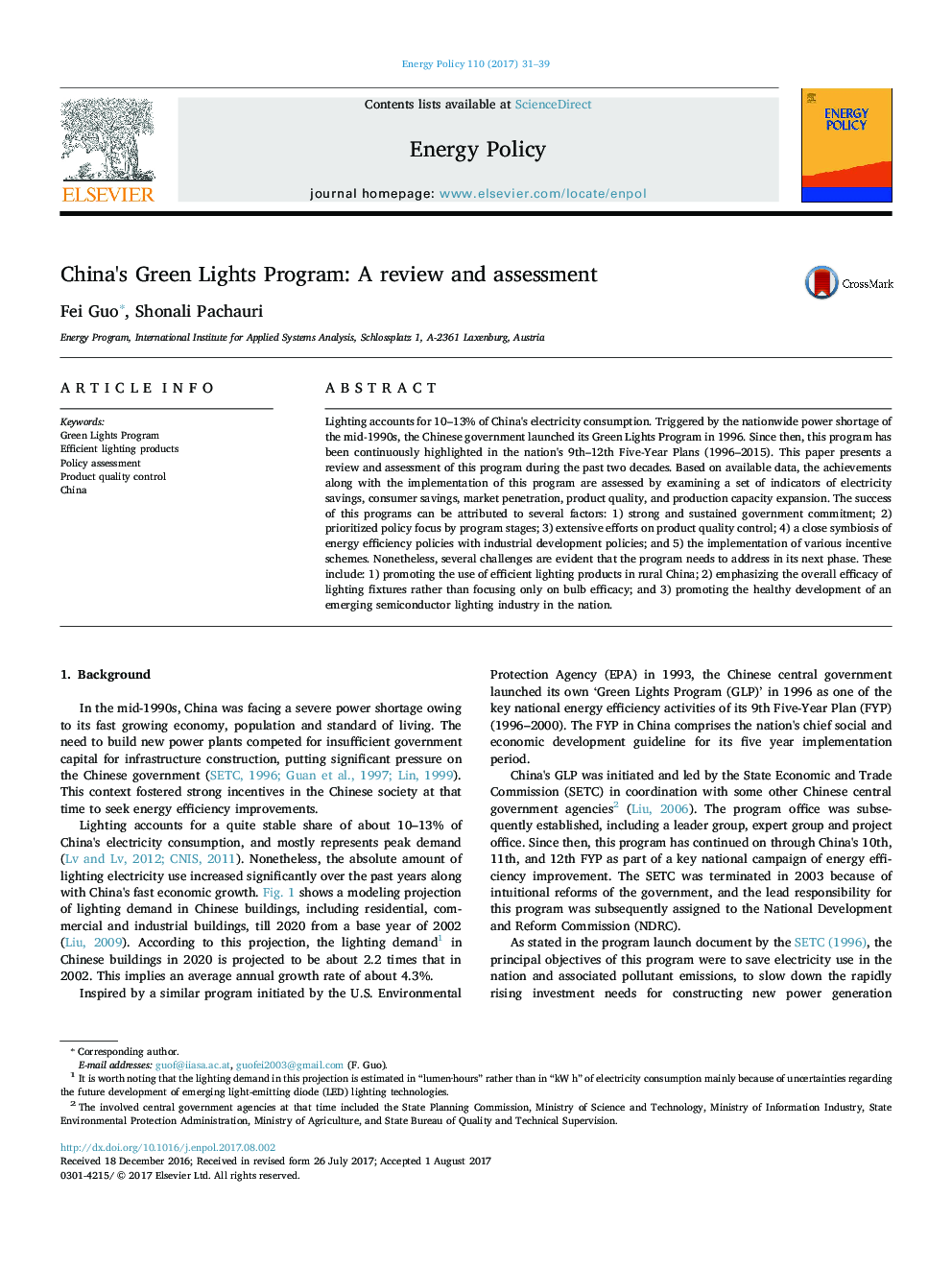| Article ID | Journal | Published Year | Pages | File Type |
|---|---|---|---|---|
| 5105532 | Energy Policy | 2017 | 9 Pages |
Abstract
Lighting accounts for 10-13% of China's electricity consumption. Triggered by the nationwide power shortage of the mid-1990s, the Chinese government launched its Green Lights Program in 1996. Since then, this program has been continuously highlighted in the nation's 9th-12th Five-Year Plans (1996-2015). This paper presents a review and assessment of this program during the past two decades. Based on available data, the achievements along with the implementation of this program are assessed by examining a set of indicators of electricity savings, consumer savings, market penetration, product quality, and production capacity expansion. The success of this programs can be attributed to several factors: 1) strong and sustained government commitment; 2) prioritized policy focus by program stages; 3) extensive efforts on product quality control; 4) a close symbiosis of energy efficiency policies with industrial development policies; and 5) the implementation of various incentive schemes. Nonetheless, several challenges are evident that the program needs to address in its next phase. These include: 1) promoting the use of efficient lighting products in rural China; 2) emphasizing the overall efficacy of lighting fixtures rather than focusing only on bulb efficacy; and 3) promoting the healthy development of an emerging semiconductor lighting industry in the nation.
Related Topics
Physical Sciences and Engineering
Energy
Energy Engineering and Power Technology
Authors
Fei Guo, Shonali Pachauri,
